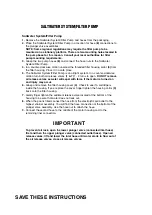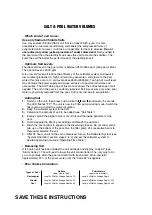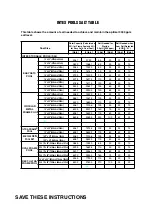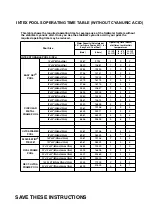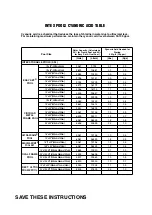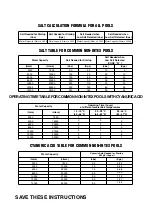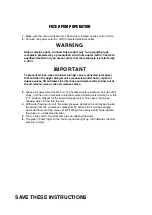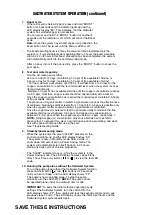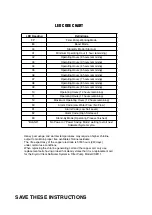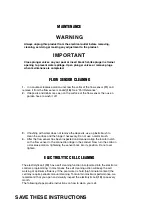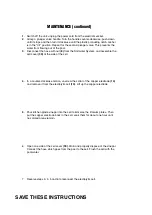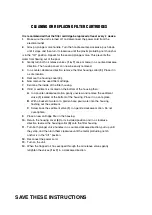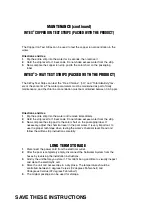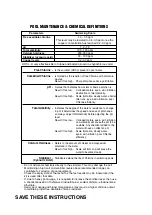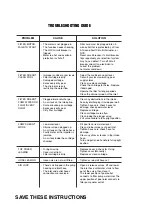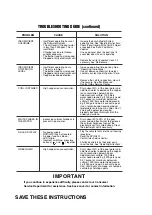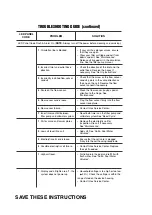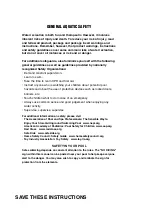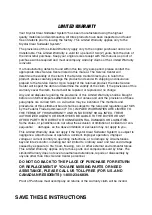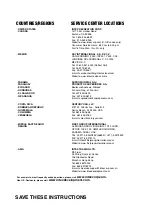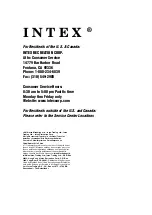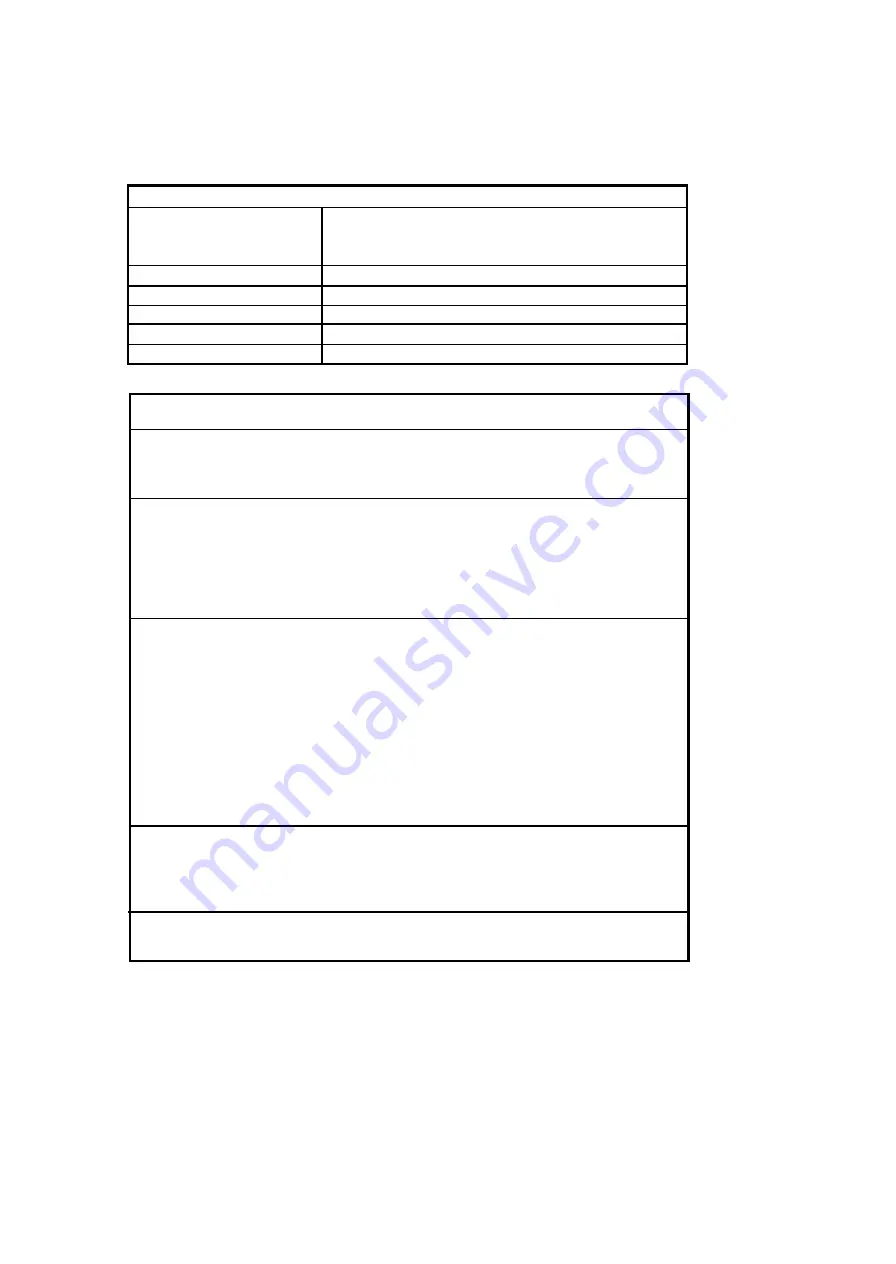
SAVE THESE INSTRUCTIONS
Page 29
POOL MAINTENANCE & CHEMICAL DEFINITIONS
• Do not add pool chemicals directly to the skimmer. This may damage the cell.
• Maintaining a high salt and sanitizer levels above recommended range can
contribute to corrosion of pool equipment.
• Check the expiry date of the test kit as the test results may be inaccurate if the
kit is used after that date.
• If, due to heavy pool usage, it is required to increase the sanitizer level, then use
a chemical based on Trichloro-s-triazinetrione or sodium dichloro-s-triazinetrione
dihydrate.
Heavy pool usage and higher temperatures may require a higher chlorine output
to maintain proper free available chlorine residuals.
HOCL - A very effective killer of algae and bacteria known as hypochlorous acid.
Free Chlorine
-
Is the sanitizer (HOCL) present in pool water.
Combined Chlorine
-
Is formed by the reaction of free Chlorine with ammonia
wastes.
Result if too high - Sharp chlorinous odor, eye irritation.
pH
-
A value that indicates how acidic or basic a solution is.
Result if too low - Corroded metals, eye & skin irritation,
destruction of total alkalinity.
Result if too high - Scale formation, cloudy water, shorter
filter runs, eye & skin irritation, poor
Chlorine efficiency.
Total Alkalinity
-
Indicates the degree of the water's resistance to change
in pH. It determines the speed and ease of pH change,
so always adjust total alkalinity before adjusting the pH
level.
Result if too low - Corroded metals, eye & skin irritation.
Low alkalinity will cause the pH to be
unstable. Any chemical added to the
water will have an affect on pH.
Result if too high - Scale formation, cloudy water,
eye & skin irritation, poor Chlorine
efficiency.
Calcium Hardness
-
Refers to the amount of calcium and magnesium
dissolved in the water.
Result if too high - Scale will form and will cause the
water to become cloudy.
Stabilizer
-
Stabilizers extend the life of Chlorine in swimming pools.
(Cyanuric Acid)
P
arameters
Swimming Pools
Free available chlorine
1.0 - 3.0 ppm
This level may be lowered to 0.6-3.0 ppm once the
copper concentration has reached 0.2-0.3 ppm.
pH
Total alkalinity
Calcium hardness
Stabilizer (cyanuric acid)
Copper levels
7.2 - 7.8
100 - 120 ppm
200-300
ppm
30 - 100
ppm
0.2-0.3
ppm
•

